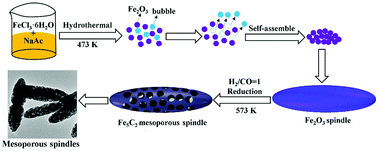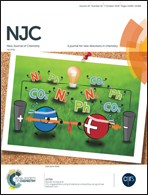Mesoporous Fe-based spindles designed as catalysts for the Fischer–Tropsch synthesis of C5+ hydrocarbons†
Abstract
Conventional mesoporous catalysts are generally obtained through the dispersion of active phases on porous supports to enhance catalytic performance. However, metal-support interactions can suppress the activation of iron oxides, and this can lead to lower catalytic activity. Moreover, the effects of supports on catalytic performance are complicated for Fischer–Tropsch (FT) synthesis. Herein, we developed novel mesoporous Fe-based spindles and the pores are self-assembled via active phases. This unique structure effectively avoids metal-support interactions during activation and FT synthesis, thus improving the FT activity. More importantly, the selectivity for C5+ hydrocarbons is found to be correlated with the pore size. It is identified that Fe/2CTAB, which has the largest pore volume among the three mesoporous spindles (Fe, Fe/CTAB, and Fe/2CTAB), affords the optimum C5+ selectivity, up to 65 wt%. This value is much higher than those for traditional co-precipitation catalysts and supported Fe-based catalysts. Moreover, FT synthesis over Fe/2CTAB leads to the lowest CH4 selectivity.



 Please wait while we load your content...
Please wait while we load your content...